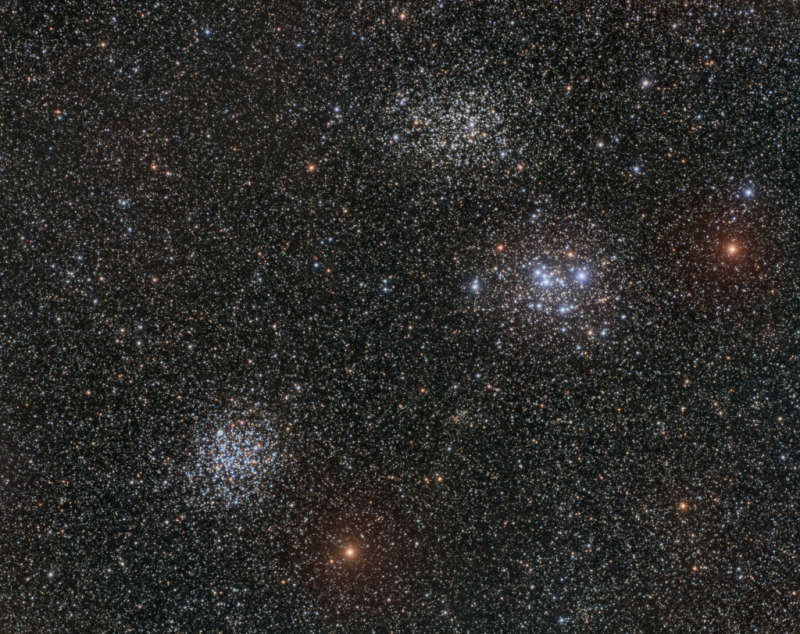Credit & Copyright: Dave Doctor
Explanation:
Galactic or
open star clusters
are young.
The swarms of stars are born together near the plane of the Milky Way,
but their numbers
steadily dwindle
as cluster members are
ejected by galactic tides and gravitational interactions.
Caught in
this telescopic frame
over three degrees across are three
good examples of galactic star clusters,
seen toward the southern sky's nautical constellation
Puppis.
Below and left, M46 is
some 5,500 light-years in the distance.
Right of center
M47 is
only 1,600 light-years away and
NGC 2423 (top) is about 2500 light-years distant.
Around 300 million years young M46
contains a few hundred stars in a region about 30 light-years
across.
Sharp eyes can spot a planetary nebula,
NGC 2438,
at about 11 o'clock against the M46 cluster stars.
But that nebula's
central star
is billions of years old, and
NGC 2438 is likely a foreground object only by chance
along the line of sight to youthful M46.
Even younger, aged around 80 million years, M47 is a
smaller and looser star cluster spanning about 10 light-years.
Star cluster NGC 2423 is pushing about 750 million years
in age though.
NGC 2423 is known to harbor an extrasolar planet,
detected orbiting one
of its red giant stars.
1999 2000 2001 2002 2003 2004 2005 2006 2007 2008 2009 2010 2011 2012 2013 2014 2015 2016 2017 2018 2019 2020 2021 2022 2023 2024 2025 |
Yanvar' Fevral' Mart Aprel' Mai Iyun' Iyul' Avgust Sentyabr' Oktyabr' Noyabr' Dekabr' |
NASA Web Site Statements, Warnings, and Disclaimers
NASA Official: Jay Norris. Specific rights apply.
A service of: LHEA at NASA / GSFC
& Michigan Tech. U.
|
Publikacii s klyuchevymi slovami:
open cluster - Puppis - Rasseyannoe skoplenie - Korma
Publikacii so slovami: open cluster - Puppis - Rasseyannoe skoplenie - Korma | |
Sm. takzhe:
Vse publikacii na tu zhe temu >> | |
